Jason Maloney reviews
Minor Earth, Major Influence
Many moons ago (1984 to be precise), the likelihood of Norway providing one of the finest, most unique bands to ever grace the UK charts was slim to say the least. The Scandanavians had just won the Eurovision Song Contest thanks to the dubious charms of *legendary* female duo Bobbysocks.
However, A-Ha were to prove quite unlike anything to emerge from Northern European shores. Right from the beginning, there was always something slightly different about this trio and their brand of pop music.

They first made their mark on the public consciousness with 1985’s Take On Me, courtesy of a stupendously inventive promo video that merged live action with what can best be described as a “moving pencil sketch” effect. The rather photogenic lead singer was “trapped” in a comic-book world, until he literally pulled a young blonde lady from her cafe chair as she read the pages in front of her, dragging the poor girl into his nightmarish existence.
The juxtaposition of the real and sketched action was breathtaking and utterly memorable. That the accompanying track was a nifty piece of 80s synth pop – complete with a endearingly foreign line in lyrics (Take On Me, rather than Take Me On) – only served to etch the whole thing even more indeliably on the brain. The single went on to reach #2 on the UK charts in the Autumn of 1985.
The history of pop music is littered with one-hit wonders, and acts that never quite repeated their initial success. In the case of A-Ha, any such misgivings were swiftly avoided when the follow-up single stormed to #1 in January 1986. The Sun Always Shines On T.V. was a truly epic piece – an intense, bludgeoning track with a thrilling keyboard riff and some urgent guitar work thrown in for good measure. Lyrically almost overwraught yet somehow managing to remain convincingly desolate and desperate, how such a complex record ever made it to the top of the mid 80s UK Singles Chart is still something of a mystery.
Meanwhile, their debut album Hunting High And Low followed an identical trajectory, shaking off a slow start by moving 50-14-2 during The Sun Always Shines On TV‘s reign at #1.
A perfectly-formed collection of tuneful, atmospheric songs with the distinctive vocals of Morten Harkett taking even the most workaday lyric to a higher plane. Blue Sky, Living A Boy’s Adventure Tale and Here I Stand And Face The Rain presented a range to the band’s abilities and musical ambitions that nobody could surely have been expecting. Clocking in at 10 tracks and 37 minutes, it’s an excellent reminder of a time when the freedom of CD had yet to alter how artists approached the recording and editing processes.
Hunting High And Low was plundered for a further two Top 10 hits during the first half of 1986. Train Of Thought – closer in sound to Take On Me than The Sun Alwas Shines.. – was given a new lick of paint for its single release, making #8 on the Top 40. Driven by a similar rhythm to their inaugural hit, it may have lacked a killer chorus, but appropriately built up quite a head of steam in the musical department. It remains one of their most enduring moments.
The title track was next, and the first ballad from the band to become a single. In its original album version, the track’s acoustic feel was the focal point of a flawless Side One. Enhanced with swooping and swirling strings, the effect was heightened. By now, the band were already selling largely to a fan-base. The single reached #5 on only its second week, having climbed from its entry position of #16. The pattern would be replicated with their next handful of hits.
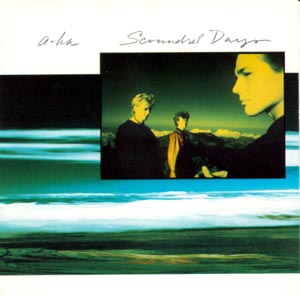
Almost exactly 12 months after their first album had appeared, the second – Scoundrel Days – arrived on the back of their most adventurous release to date – I’ve Been Losing You. Another dark and brooding affair, it completely ditched the perky, synthesized feel of their previous work. Mature beyond their recording years, it was an extraordinary single to issue at the time. Perhaps slightly confused and bewildered, the public didn’t quite warm to its charms. It made #8 before swiftly dropping down the chart.
Ironically perhaps, the single wasn’t entirely representative of the accompanying album. Scoundrel Days was far from a quantum leap forwards, yet – as on I’ve Been Losing You – it hinted at a darker, deeper aesthetic and emotional landscape. Both the title cut and The Weight Of the Wind returned to the style first evidenced on The Sun Always Shines.., while October and The Soft Rains Of April touched upon a more ethereal ambience. Again comprising 10 tracks, only the rather throwaway Maybe Maybe and the forgettable, formulaic We’re Looking For The Whales let the album down.
Commercially, the lightweight (and rather irritating, it has to be said) Cry Wolf saved the day, becoming one of the biggest hits during that winter. A third single – the fragmented and almost Beatle-esque Manhattan Skyline – fell short of the Top 10 in March 1987, the first A-Ha release so to do. It was in fact the album’s highlight, deftly incorporating a variety of melodic and lyrical themes into one schizophrenic masterpiece.
Then came Bond….James Bond. Clearly the people responsible for choosing who should record the theme tune for 1987’s The Living Daylights had seen (or heard) something in A-Ha that suggested they were the ones for the job. Collaborating with erstwhile Bond composer John Barry, the result was probably the best 007 theme of recent times, focusing on their more atmospheric tendencies while still not forgetting to include a decent hookline. The single went to #5 within a fortnight of release.
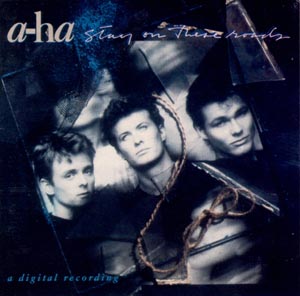
It would be 9 months before the next A-Ha material emerged, and in their absence the Stock Aitken Waterman hit-factory phenomenon had well and truly exploded, along with a teenage boy-band by the name of Bros. The climate had shifted since the previous summer, so it must have been a relief to see Stay On These Roads continue the band’s track record by going to #5 on week two of its chart career. The title track from their upcoming third album, it was as diametrically-opposed to the manufactured froth dominating the charts as you could get. An elegant ballad, it came replete with the chugging synth bassline that had now almost become their signature trademark.
Stay On These Roads – the album – entered the UK charts at #2 in May 1988, their third #2 album in as many releases. Significantly though, the second (Scoundrel Days) had spent considerably fewer weeks on the chart than the first (Hunting High And Low). This trend continued, as the third managed even less (just 10 weeks compared to 29 and 77 respectively). There were further alarm bells ringing when the album’s next single The Blood That Moves The Body stalled at #25. In fairness, it wasn’t perhaps the most listener-friendly choice, yet a year earlier it would have almost certainly fared much better.
A-Ha were suffering from the same problems encountered by the majority of hugely popular groups with a predominantly female (and teenage) audience, but in truth they were never really a teen band. If several tracks on their first two albums had hinted at this, then Stay On These Roads was the unequivocal proof.
Touchy! and You Are The One – both catchy little ditties (and back-to-back Top 15 hits later in 1988) – were aberrations on a hugely impressive collection. The Living Daylights also made an appearance in remixed form, apparently in the style they preferred to perform it in a live situation.
Yet it was on the other seven songs that the argument for Aha’s enduring appeal and continued success was most convincing. This Alone Is Love‘s cascading chords, Hurry Home‘s eerie, insistent rhythm and Out Of Blue Comes Green‘s glorious, soaring chorus all signalled a growing maturity and expanding horizons. This was music tailor-made for the CD generation, yet it somehow failed to transcend their existing (and steadily diminishing) fanbase.
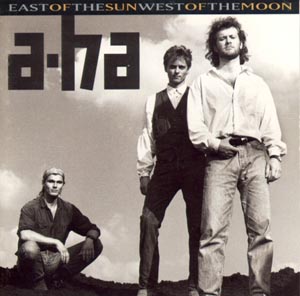
Mindful of this, the somewhat drastic changes that heralded 1990’s East Of The Sun, West Of The Moon were possibly a response to the situation. Comprehensively ignoring any of the recognisable synthetic backdrops which had become their calling card, it had a more *organic* approach. This also extended to their physical appearance, the clean cut image discarded in favour of a shaggy, retro look.
Despite this, East Of The Sun… was still very much an A-Ha album to all other intents and purposes. A few of the songs took some getting used to, the Simple Minds-lite of I Call Your Name and the pseudo-Zeppelin riffage of Sycamore Leaves in particular, though both were still quality tracks. The sub-INXS Cold River was less successful, however.
Elsewhere, the fresh slant on distinctive themes in songs such as Waiting For Her, Rolling Thunder and the title track itself brought a pleasingly authentic touch to a muse which had always evoked something more than pure synth pop music. Even a surprise cover version of the Everley Brothers’ Crying In The Rain in this new style was stunnigly pulled off, reaching #13 on the UK Singles charts in the process.
Sadly, it was an achievement they have yet to emulate, and remains their most recent Top 20 hit. The East Of The Sun… album reached #12 in November 1990, but lasted only four weeks before disappearing. I Call Your Name missed the Top 40 just before the end of 1990, while Early Morning missed the Top 75 altogether in February 1991.
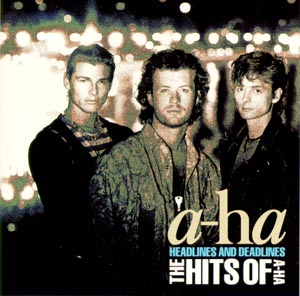
Next it was time for looking back, as November 1991 saw the release of Headlines & Deadlines… The Hits Of A-Ha. Comprising all 15 hits, plus one new track Move To Memphis (also released as a single, and another flop), it naturally overlooks any non-single highlights from the four albums to that point.
A-Ha’s catalogue of hits ranks among the finest of any era or genre, yet the decision to arrange the tracks in non-chronological order was a nisguided one. Opening with Take On Me was logical, but placing Cry Wolf, Touchy! and You Are The One immediately after it smacked of commercial considerations over artistic concerns.
Luckily, CD allows this chosen order to be reprogrammed into a more appropriate sequence.
(DVDfever Ed: It was a dumb idea to place The Sun Always Shines On TV AFTER Train of Thought on this album, as that’s how it appeared on the video compilation too, but… the promo for the former follows on to the latter seamlessly – except here.)
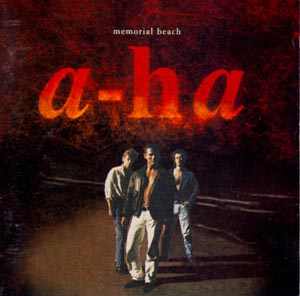
An 18-month hiatus ensued before A-Ha’s fifth studio album Memorial Beach arrived in the summer of 1993. It picked up largely where the previous album had left off, except that the more other-worldly characteristics had been eschewed for a meatier rock-influenced sound. U2 and INXS were the references throughout a slightly disappointing record. The two singles – Dark Is The Night For All (#19) and Angel In The Snow (#41) stood out among the 10 tracks (9 previously unreleased, plus Move To Memphis).
The album seemed laboured, weighed down by the inflexible rock arrangements and often uninspired lyrics. It closed on the beautiful, elegiac title track… but one wondered where they would (or could) go next. If the fun of it all had evaporated for the band, it wasn’t as much of a pleasure for the listener as it had always been either.
Memorial Beach entered the charts at #17, but was gone within a month.

Seven years later, they are back with Minor Earth, Major Sky… a quintessential A-Ha album title, and a wonderful return to form.
Preceeded by the sublime Summer Moved On single (criminally overlooked and subsequently only a #33 hit), the album reaffirms all the qualities inherent in the band’s music, and bears the hallmarks of their best work. Lighter, breezier, full of winning melodies and infectious rhythms, Morten Harket’s vocals sound at home once more in these surroundings. It’s as if the last 15 years had never happened.
Minor Earth… is every bit the direct descendant of Hunting High & Low, the result of a steady evolution that may have veered off the beaten track on occasion but still conspired to stay on course.
Review copyright © Jason Maloney, 2000. E-mail Jason Maloney
Check out Jason’s homepage: The Slipstream.
Reviewer of movies, videogames and music since 1994. Aortic valve operation survivor from the same year. Running DVDfever.co.uk since 2000. Nobel Peace Prize winner 2021.
